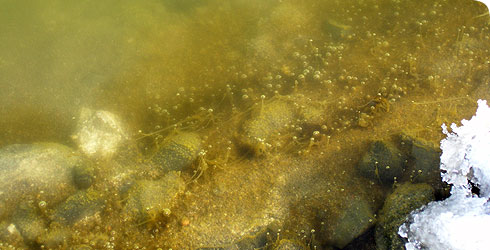Phormidium pseudpriestleyi
Phormidium pseudpriestleyi is a cyanobacterium - a gram-negative, oxygen-producing, photosynthetic bacterium. It was first described from samples collected on Ernest H Shackleton’s expedition to the Antarctic in 1907.
Cyanobacteria were initially described as algae in the 18th century, before scientists realised they were bacteria. Therefore, they are also called Cyanophyta or blue-green algae based on their blue-green coloration.
Phormidium pseudpriestleyi lives in the Antarctic and is very well adapted to life in extreme conditions.
It produces antifreeze compounds to protect itself against extreme cold, and pigments that protect against intense UV radiation. It is also adapted to survive long periods without light and nutrients.
Often these cyanobacteria completely cover the shallow zones of ponds and lakes with orange-green bioflims.
Species detail
-

Taxonomy
Phormidium pseudpriestleyi cells are microscopic - over a thousand would fit on a pinhead - but they grow in groups to form hair-like structures. Find out more.
-

Distribution
The first samples of Phormidium pseudpriestleyi were collected in 1907 by scientists on an Antarctic expedition led by Ernest H Shackleton. Find out where this cyanobacterium can be found today.
-

Biology
Conditions are harsh in Antarctica. Find out how Phormidium pseudpriestleyi copes with the elements.
-

Behaviour
Cyanobacteria filaments can grow in large numbers and form biofilms that cover vast areas of water. Find out what happens when other microbes hitch a ride.
-

References
Get more reference information on Phormidium pseudpriestleyi.
Images
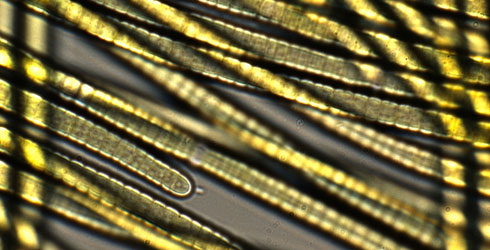
Phormidium pseudpriestleyi isolated from a meltwater pond on the McMurdo Ice Shelf, Antarctica
© Patricia Mesquita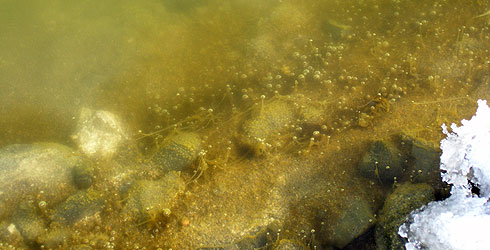
Microbial mat with Phormidium pseudpriestleyi, Antarctica
© Anne D Jungblut
Hypersaline pond on McMurdo Ice Shelf, Antarctica
© Anne D Jungblut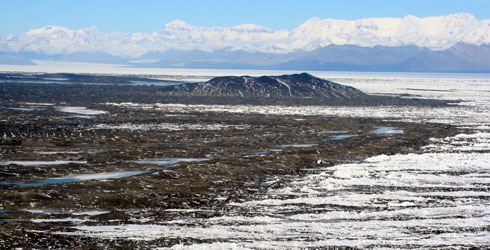
McMurdo Ice Shelf, Antarctica
© Anne D Jungblut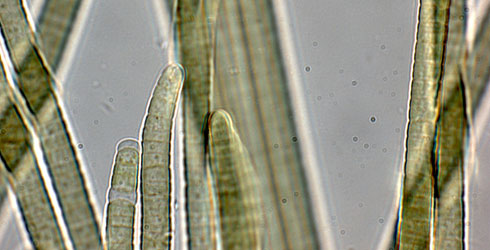
Phormidium pseudpriestleyi
© Patricia Mesquita, Centre for Northern Studies (CEN)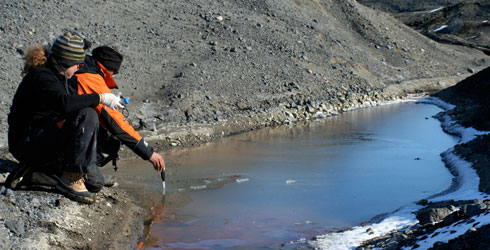
Scientists sampling cyanobacteria-dominated microbial mats in meltwater ponds, Antarctica
© Susie Wood, Cawthron InstituteAbout the author

Dr Anne Jungblut
Researching cyanobacterial diversity and ecology in the Genomics and Microbial Biodiversity Division, Department of Life Sciences.
Author's quote
"I chose Phormidium pseudpriestlyi because it was first described from samples collected by scientists James Murray and Raymond E Priestley as part of the British Imperial Antarctic expedition to Antarctica (Nimrod Expedition, 1907–1909) led by Ernest H Shackleton during the heroic age of Antarctic exploration. It is part of the Cryptogamic collection at the Natural History Museum."
Toolbox
Glossary
Akinetes
Resting or dormant cell, formed by enlargement of the vegetative cell.
Heterocytes
Cells that develop from the vegetative cell that contain nitrogen-fixing enzymes.
